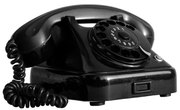Pneumatic tools--also referred to as air tools--are devices that are operated with pressurized air or gas. The concept behind pneumatic tools has its origins in ancient times, but it was not until the last 500 years that it truly came to fruition.
Origins
Greek mathematician Hero of Alexandria (c. 10 to 70 AD) is reputed to have thought of the field that gave birth to pneumatic tools (pneumatics) in the 1st century A.D. There is evidence of some of his inventions powered by steam and wind. However, such ideas were never fully explored for several centuries after his time.
Air Pump/Compressor
German physicist and engineer Otto von Guericke (1602 to 1686) is known to have invented the air pump or compressor. The device sucked out air or gas from whatever vessel it was attached to. He experimented with copper enclosures called hemispheres, demonstrating that he could use the pump to pull apart the two halves.
Pneumatic Tube/Pipe
Two centuries after Guericke, pneumatic tools were developing beyond being mere exciting curiosities; they were now becoming practical, applied to certain everyday activites. Pneumatics in the 19th century was dominated by the pneumatic tube, which was popularized by people in Victorian England using pipelines to transmit telegrams from one telegraph station to another. Also, John Wanamaker (1838 to 1922), an American merchant, introduced tube systems to the United States Post Office (when he was postmaster general) and department stores for transportation of mail items and money, respectively.
The most elaborate application of pneumatic tubes, however, was in 1867, when Alfred Beach (1826 to 1896) practically invented the pneumatic subway line by demonstrating that a pipe was able to transport passengers. Today, pneumatic tubes are used at bank terminals to facilitate transactions at drive-throughs.
Pneumatic Hammer
Charles Brady King (1869 to 1957) invented the pneumatic hammer in 1890. This tool was used for fastening steel structures in shipyards and railway sleepers. Before this invention, steam was the preferred source of power; the pneumatic hammer was easier and more efficient in use. The tool was one of the two exhibitions he made at the World's Columbian Exposition in 1893.
Pneumatic Drill
A pneumatic drill, powered by compressed air, is mainly used to drill rock and break up pavement. However, it is not clear exactly who invented it. Some sources point to Samuel Ingersoll in 1871; others state that he invented the pneumatic hammer instead, an achievement more commonly associated with the aforementioned King.
Related Articles
Resources
Writer Bio
Based in the D.C. area, Andy Joseph works full-time as a data analyst and technical writer. He has been writing articles about technology, health, politics, music, culture and automobiles since 2007. His work has appeared in The Express, Congressional Report and Road & Track. He has a master's degree in journalism and technology management.










